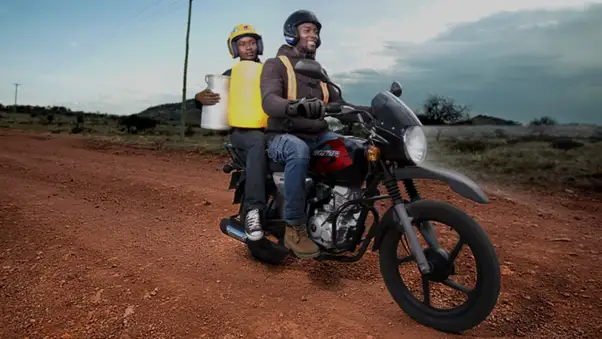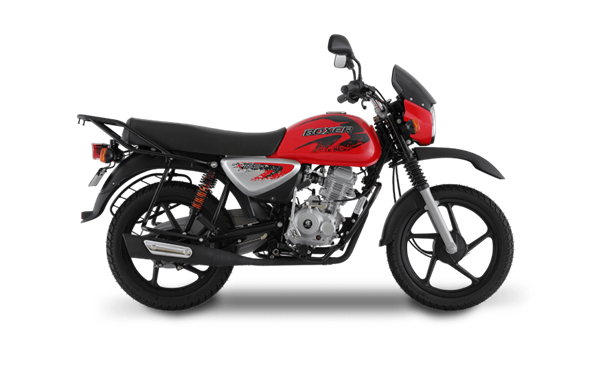
Choose your Country

Choose your Country
Last Update: July 29 2025

In the early mornings of Eldoret, a boda boda rider is already gearing up before sunrise, ready to transport farm produce to the market. By mid-morning, the same bike navigates muddy lanes in Kisii or cuts through the busy streets of Nairobi. As evening falls, it’s back to work, this time hauling building supplies for a small shop owner.
For many riders across Kenya, this is a daily routine, with their motorbikes becoming as reliable as a business partner. The Bajaj Boxer bikes stand out in these conditions, designed to handle heavy loads, long hours, and rugged roads with ease. But even the toughest bike needs care to keep going strong. Small mistakes, if left unchecked, can gradually wear down the Boxer’s performance.
By avoiding common missteps, you can extend the life of your bike, minimise unexpected breakdowns, and keep it running smoothly for years to come.
Here’s what every work-focused rider should know to keep their Bajaj Boxer in top shape.

Small maintenance mistakes can quietly damage this hardworking motorcycle and cut short its lifespan. Avoiding these common habits helps keep your Boxer strong, ready, and dependable for every trip and every load.
In a busy day filled with back-to-back trips, it’s easy to push off servicing. But missing maintenance checks is one of the fastest ways to reduce a Boxer’s lifespan. Long, dusty routes and heavy loads wear out parts quickly, especially in areas like Meru or Kakamega.
Routine servicing helps catch worn brake shoes, clogged filters, and chain issues early. This keeps the engine strong and the suspension smooth, crucial when carrying passengers or goods over uneven roads.
Tip: The Boxer bikes in Kenya perform best with servicing every 3,000 - 5,000 km. However, the Boxer 150 HD, often used for heavier loads and rougher terrain, may need checks every 1,000–1,200 km. Visit an authorised Bajaj service centre to keep the bike work-ready.
Adding extra passengers or goods may seem like a quick way to boost earnings. But regularly exceeding weight limits damages the frame, suspension, and tyres. A bike struggling under too much load becomes harder to control, especially on steep or muddy village roads.
The Boxer is trusted for its strong frame and heavy-duty suspension, but even it has limits. Respecting those limits keeps the bike stable and avoids unexpected repairs that can pause work for days.
Tip: Always check the recommended load capacity in the owner’s manual. Balanced loads keep the Boxer strong and the rider safe.
Chains face daily punishment on Kenya’s unpredictable roads. They collect dust in Narok, mud in Kisii, or rough stones in rural Kitui. Neglecting the chain leads to faster wear, reduced power delivery, and higher fuel use.
A dry or loose chain risks snapping mid-trip, leaving the rider stranded far from town and missing valuable jobs.
Tip: Clean and oil the chain weekly, or after rides through muddy or dusty routes. Checking tension prevents sudden failures and helps maintain smoother, more efficient rides.
Choosing cheaper, non-genuine parts might feel like saving money upfront, but they wear out faster and can damage critical systems. A Boxer relies on strong, tested parts to deliver reliable performance under heavy daily use.
Low-quality parts often fail under the demands of heavy cargo and rough terrains, leading to unexpected breakdowns and higher long-term costs.
Tip: Always buy genuine Bajaj parts from authorised dealers. The Bajaj motorbikes page highlights authentic options designed for each Boxer model. Using original parts keeps the bike dependable and income flowing.
Knocks in the engine, weaker brakes, or changes in handling often signal deeper problems. Many riders ignore these early warnings to avoid missing a day’s work. But delaying small fixes can lead to major breakdowns and bigger repair bills.
Addressing issues early keeps the Boxer on the road and prevents losing days of work and income.
Tip: Always listen and watch for changes. If your Boxer 125 X struggles on hills or the Boxer 150 HD feels unstable on rough tracks, get it checked at an authorised service centre or contact us before it worsens.
Boxer motorbikes are like hardworking partners that help riders across Kenya keep businesses running, transport passengers safely, and deliver goods on time. Avoiding simple mistakes like skipping service, overloading, ignoring the chain, using non-genuine parts, or delaying repairs makes all the difference in keeping a Boxer strong and reliable.
With proper care, every ride stays smooth, every trip stays profitable, and every day stays on track.
Looking to keep your Boxer in top condition or need genuine support? Visit your nearest authorised Bajaj service centre or contact us today to get expert help and genuine parts.
1. How to keep a bike well-maintained for a long time?
Regular servicing every 3,000–5,000 km prevents wear and tear. Clean and lubricate chains weekly. Check tyre pressure, brakes, and oil levels before rides. Use genuine parts and address unusual noises or leaks early to avoid bigger repairs.
2. How can I prevent unexpected breakdowns in my Bajaj Boxer?
To avoid breakdowns, stick to your service intervals, monitor fluid levels regularly, and use genuine Bajaj parts. Early attention to issues like unusual sounds can prevent bigger problems later.
3. Are spare parts for the Bajaj Boxer easily available in Kenya?
Yes, spare parts for the Bajaj Boxer are widely available at authorised Bajaj service centers across Kenya. Always opt for genuine parts to maintain the bike’s performance and longevity.
One Bike, Many Jobs: How Boxer Supports Everything from Boda Boda to Agro-Deliveries
Know More
Powering Small Businesses: How Tuktuks are Driving Entrepreneurship in Nairobi and Western Kenya
Know More
The Backbone of the Rift Valley: How Motorcycles Empower Rural Kenya
Know More
How the 5-Speed Gearbox Gives Boxer Riders a Real Edge in Kenya
Know More
From Shock Absorption to Frame Strength: A Deep Dive into Boxer 150 X’s Tough Build
Know More
Discovering the Significance of Three-Wheeler Tuk-tuks for Urban Accessibility in Kenya
Know More
Heavy-Duty Power for Heavy-Duty Tasks: Why the Bajaj Boxer 150 HD is a Game-Changer
Know More
How Bajaj Bikes Drive Economic Development in Kenya
Know More
Why Small Business Owners Trust the Boxer 125 HD
Know More
Maintaining Your Tuk-tuk in Kenya: Essential Tips for Longevity and Efficiency Across Regions
Know More
From 100cc to 150cc: How to Choose the Best Bajaj Boxer Range for You?
Know More
Why Tuktuks Are the Smartest Way to Deliver in Kenya’s Towns
Know More
Power That Pays Off: Why the Boxer 125 HD Is Your True Income Enabler
Know More
Understanding How the Bajaj Boxer Masters Challenging Conditions
Know More
Bajaj Boxer 100 HD ES: The Flexible Performer for Everyday Business
Know More
Mastering Your Bajaj Boxer: A Rider’s Guide to Enhanced Performance
Know More
Boxer HD Series Breakdown: Which Model Fits Your Hustle?
Know More
The Tuktuk Experience: Why Tuktuks Are Kenya’s Smartest Urban Transport Tool
Know More
The Only Bike You’ll Ever Need: How Bajaj Boxer Adapts to Any Job in Kenya
Know More
Boxer 100cc Series: The Smart Pick for Reliable, Everyday Power
Know More
Why the Boxer 125 Is the Smartest Bike for Kenya’s Boda Boda Business
Know More
Ride Rough, Stay Steady: Boxer’s Suspension System Explained
Know More
Mastering the Metropolis: Selecting the Right Motorbike for Urban Utilities
Know More
The Bajaj 150 X: The Perfect Load Carrier for Rough Roads and Long Rides
Know More
From Thika Roads to Maasai Mara Trails: Bajaj Motorcycles, Kenya's Reliable Workhorse
Know More
The Social Impact of Motorcycles in Western Kenya's Communities
Know More
Navigating Nairobi's Urban Pulse: Why Bajaj Motorcycles Are the City Rider's Choice
Know More
Why Every Delivery Rider in Town Should Be Eyeing the Boxer 125 HD
Know More
Buying a Motorcycle in Nairobi? Your Guide to Making a Smart Selection
Know More
Why the Bajaj Boxer Motorcycle is the Undisputed King of Tough Terrains
Know More
From Nairobi's Hustle to Rural Paths: The Bajaj Boxer, Kenya's Unsung Hero
Know More
Powering the Rift Valley: Why the Boxer 150cc is the Go-To for Kenyan Farmers and Traders
Know More
Which Bajaj Motorcycle is Right for Your Business in Kenya? A Comprehensive Buyer's Guide
Know More
Bajaj Three-Wheelers in Kenya: Driving Business Growth and Mobility
Know More
Bajaj vs. Competitors: Why Bajaj Dominates the Kenyan Motorcycle Market
Know More
Fuel Efficiency and Durability: The Bajaj Advantage for Kenyan Riders
Know More
Maximising Your Boxer 150's Performance and Longevity: Essential Tips
Know More
Bajaj Boxer 125 vs. Competitors: A Head-to-Head Battle for the 125cc Crown
Know More
Second-Hand vs. Brand New Bikes in Kenya: Which One Should You Buy?
Know More
A Deep Dive into the Bajaj Boxer 100 HD ES Comfort Features
Know More
Why Every Smart Driver is Upgrading to the New Bajaj RE 4S Petrol
Know More
Built to Outlast the Daily Hustle: The New RE’s Frame, Finish, and Features
Know More
Ride-Hailing at Scale? Here’s Why the RE 4S is the Backbone You Need
Know More
5 Reasons Ride-Hailing Fleets Should Switch to the New Bajaj RE 4S
Know More
5 Reasons Why Boxer Is the Best Mototaxi Bike in Kenya
Know More
What’s the Ideal Boxer Model for You? A Buyer’s Guide
Know More
A Beginner’s Guide to Boxer Motorcycle Servicing
Know More
Your First Bike? Here’s Why Boxer Is the Right Choice
Know More
Types of Motorbikes in Kenya: A Complete Guide for Buyers
Know More
How to Maintain Your Boxer Motorbike for Long-Term Use
Know More
The Economic Impact of Boxer Bikes on Village Mobility
Know More
What Makes Boxer Bikes Ideal for Agricultural Transport?
Know More
Boxer 100 Series: The Best Motorcycles for Light Commercial Use
Know More
Best Boxer Bike in Kenya for Rural Transport in 2025
Know More
Exploring the Durability of Boxer Bikes on Kenyan Roads
Know More
How Boxer Bikes Help Small Business Owners in Kenya
Know More
Why Boxer 100 HD Is the Most Fuel-Efficient Utility Bike
Know More
Why Boxer 100 HD ES Is Perfect for City and Village Use
Know More
Boxer 100 HD ES: Durability, Comfort, and Performance Combined
Know More
Maintenance Tips to Keep Your Bajaj Boxer 125 HD Running Strong
Know More
Why Mototaxi Drivers Prefer Boxer 100 KS
Know More
Choosing Between Boxer 100 KS and Boxer 100 HD: A Practical Guide
Know More
Same Spirit, Two Styles: Exploring the Boxer 100 KS and HD ES
Know More
The Boxer 100 KS: Affordable Mobility for First-Time Buyers
Know More
The Boxer 125 X: A Flexible Workhorse for All Terrains
Know More
How the Boxer 125 X Offers Flexibility for Small Businesses
Know More
How Boxer 150 HD Handles Load Like a Pro
Know More
Why the Boxer 150 HD Is a Status Symbol in Transport Circles
Know More
How Boxer 150 X Helps Mototaxi Operators Maximise Earnings
Know More
Top Features That Define the Boxer Motorcycle
Know More
The Champion of Rough Roads: Boxer 150 X Review
Know More
Why the Boxer 150 X Dominates Africa’s Toughest Terrains
Know More
How Boxer Bikes Are Powering Kenya’s Economy
Know More
Getting to Know the Heavy Duty Boxer 150cc Range: Features and Benefits
Know More
Bajaj Boxer for Heavy-Duty Tasks: Rugged, Reliable, and Ready to Roll
Know More
Boxer 150 HD: Built Tough for Long Routes and Heavy Loads
Know More
Boxer 150 HD Maintenance Tips for Rural Riders
Know More
Value Meets Reliability: Why Bajaj Bikes Are Perfect for Kenyan Roads
Know More
5 Reasons the Boxer 150 X Is Built for Boda Boda
Know More